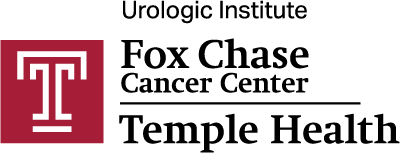Interstitial Lung Disease (ILD) and Associated Pulmonary Hypertension

Program Goals
Interstitial lung disease (ILD) is a commonly encountered disease state. Patients who develop ILD associated with pulmonary hypertension have an increased mortality risk. This program aims to review the classification of commonly encountered interstitial lung diseases. Secondly, to describe the pathophysiology that leads to the development of ILD associated pulmonary hypertension. Lastly, to review a diagnostic approach to ILD associated pulmonary hypertension along with treatment options.
Target Audience
Pulmonologists; Critical Care Specialists; Internal Medicine and Primary Care Physicians; Physician Assistants; Advanced Practice Nurses; and Nurse Practitioners.
Learning Objectives
After the conclusion of this activity, participants should be able to:
-
Describe the pathophysiology of ILD and Concomitant Pulmonary Hypertension.
-
Identify a diagnostic approach to ILD Pulmonary Hypertension patient population.
-
Summarize current treatment guidelines for ILD and Concomitant Pulmonary Hypertension.
Faculty
Sheila Weaver, DO
Professor, Thoracic Medicine and Surgery
Lewis Katz School of Medicine
Temple University
Mario Naranjo-Tovar, MD, MHS
Assistant Professor, Thoracic Medicine and Surgery
Lewis Katz School of Medicine
Temple University
Educational Activity Agenda
Educational Presentation (54 minutes)
Post Test, Evaluation & Certificate delivery (10 minutes)
Total Activity: (64 minutes)
Faculty Disclosures
The faculty disclosed the following financial relationships with ineligible companies related to the content of this educational activity.
Sheila Weaver, DO
• Nothing to disclose
Mario Naranjo-Tovar, MD, MHS
• Nothing to disclose
None of the faculty for this educational activity have relevant financial relationships to disclose with ineligible companies.
Course Directors, Planners, Reviewers, and Managers/CME Staff Disclosures
The course directors, planners, reviewers, and managers/CME staff disclosed the following financial relationships with ineligible companies related to the content of this educational activity:
Sheila Weaver, DO (Planner and Faculty)
-
Nothing to disclose
Mario Naranjo-Tovar, MD, MHS (Planner and Faculty)
-
Nothing to disclose
Gilbert D'Alonzo (Reviewer)
-
Nothing to disclose
Arnold I. Meyer, Ed.D, FACEHP (Planner and CME Staff)
-
Nothing to disclose
Katrina Ilagan (CME Staff)
-
Nothing to disclose

Accreditation Statement
Lewis Katz School of Medicine at Temple University is accredited by the Accreditation Council for Continuing Medical Education (ACCME) to provide Continuing Medical Education for physicians.
Certification Statement
Lewis Katz School of Medicine at Temple University designates this enduring material for a maximum of 1.0 AMA PRA Category 1 Credit(s)™. Physicians should claim only the credit commensurate with the extent of their participation in the activity.
Disclosure Policy
It is the policy of the Lewis Katz School of Medicine at Temple University, The Albert J. Finestone, M.D., Office for Continuing Medical Education that anyone in a position to control the content of a certified educational activity must disclose any financial relationships with ineligible companies within the prior 24 months. The Accreditation Council for Continuing Medical Education (ACCME) defines ineligible companies as “those whose primary business is producing, marketing, selling, re-selling, or distributing healthcare products used by or on patients.” Speakers must also disclose discussions of unlabeled/unapproved uses of drugs or devices during their presentations. The Lewis Katz School of Medicine at Temple University has policies in place that will identify and mitigate all conflicts of interest prior to the educational activity. Detailed disclosure will be communicated to learners prior to the activity.
How to Obtain CME Credit
Attendees are expected to view all presentations before attempting to take the test and/or complete the activity evaluation. Successful completion will lead to the issuance of a certificate for AMA PRA Category 1 Credit(s)™. To receive credit, the course must be completed between January 30, 2025 - January 30, 2027.
Participation in this activity should be completed in approximately 1.0 hour(s). Please follow these steps in order to receive CME/CE credit for viewing the webcast:
-
Read all of the CME/CE accreditation information above.
-
View the complete electronic (web) activity.
-
Click on the link to apply for CME/CE credits.
-
Complete the online registration (registration is free).
-
Complete the online test and/or evaluation. Participants must receive a test score of at least 75% and answer all evaluation questions to receive a certificate.
After successfully completing the online test and/or evaluation, your application will be immediately processed, and you will be given the opportunity to download a personalized CME/CE certificate for participation in this activity.
Should you have any CME questions regarding this activity, please contact:
The Albert J. Finestone, MD Office for Continuing Medical Education
Lewis Katz School of Medicine at Temple University
3500 North Broad Street
11th Floor MERB, Room 1111S
Philadelphia, PA 19140
Main CME Phone: 215-707-4787
Fax: 215-707-8268
Release and Expiration Dates
Release Date: January 30, 2025
Expiration Date: January 30, 2027



